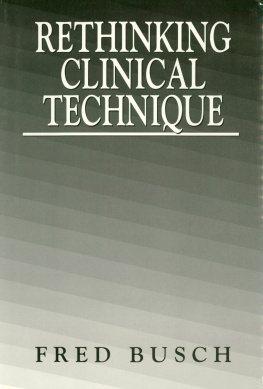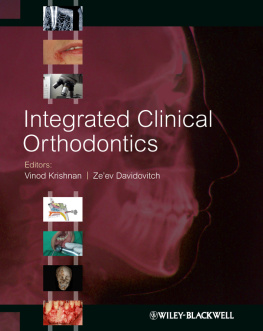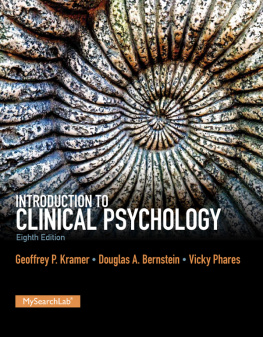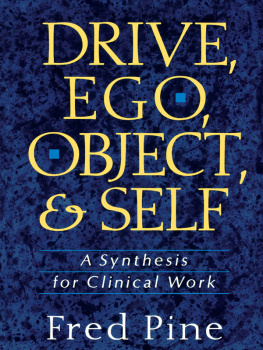Fred Busch - Rethinking Clinical Technique
Here you can read online Fred Busch - Rethinking Clinical Technique full text of the book (entire story) in english for free. Download pdf and epub, get meaning, cover and reviews about this ebook. year: 1998, publisher: Jason Aronson, Inc., genre: Romance novel. Description of the work, (preface) as well as reviews are available. Best literature library LitArk.com created for fans of good reading and offers a wide selection of genres:
Romance novel
Science fiction
Adventure
Detective
Science
History
Home and family
Prose
Art
Politics
Computer
Non-fiction
Religion
Business
Children
Humor
Choose a favorite category and find really read worthwhile books. Enjoy immersion in the world of imagination, feel the emotions of the characters or learn something new for yourself, make an fascinating discovery.
- Book:Rethinking Clinical Technique
- Author:
- Publisher:Jason Aronson, Inc.
- Genre:
- Year:1998
- Rating:3 / 5
- Favourites:Add to favourites
- Your mark:
- 60
- 1
- 2
- 3
- 4
- 5
Rethinking Clinical Technique: summary, description and annotation
We offer to read an annotation, description, summary or preface (depends on what the author of the book "Rethinking Clinical Technique" wrote himself). If you haven't found the necessary information about the book — write in the comments, we will try to find it.
Fred Busch: author's other books
Who wrote Rethinking Clinical Technique? Find out the surname, the name of the author of the book and a list of all author's works by series.
Rethinking Clinical Technique — read online for free the complete book (whole text) full work
Below is the text of the book, divided by pages. System saving the place of the last page read, allows you to conveniently read the book "Rethinking Clinical Technique" online for free, without having to search again every time where you left off. Put a bookmark, and you can go to the page where you finished reading at any time.
Font size:
Interval:
Bookmark:
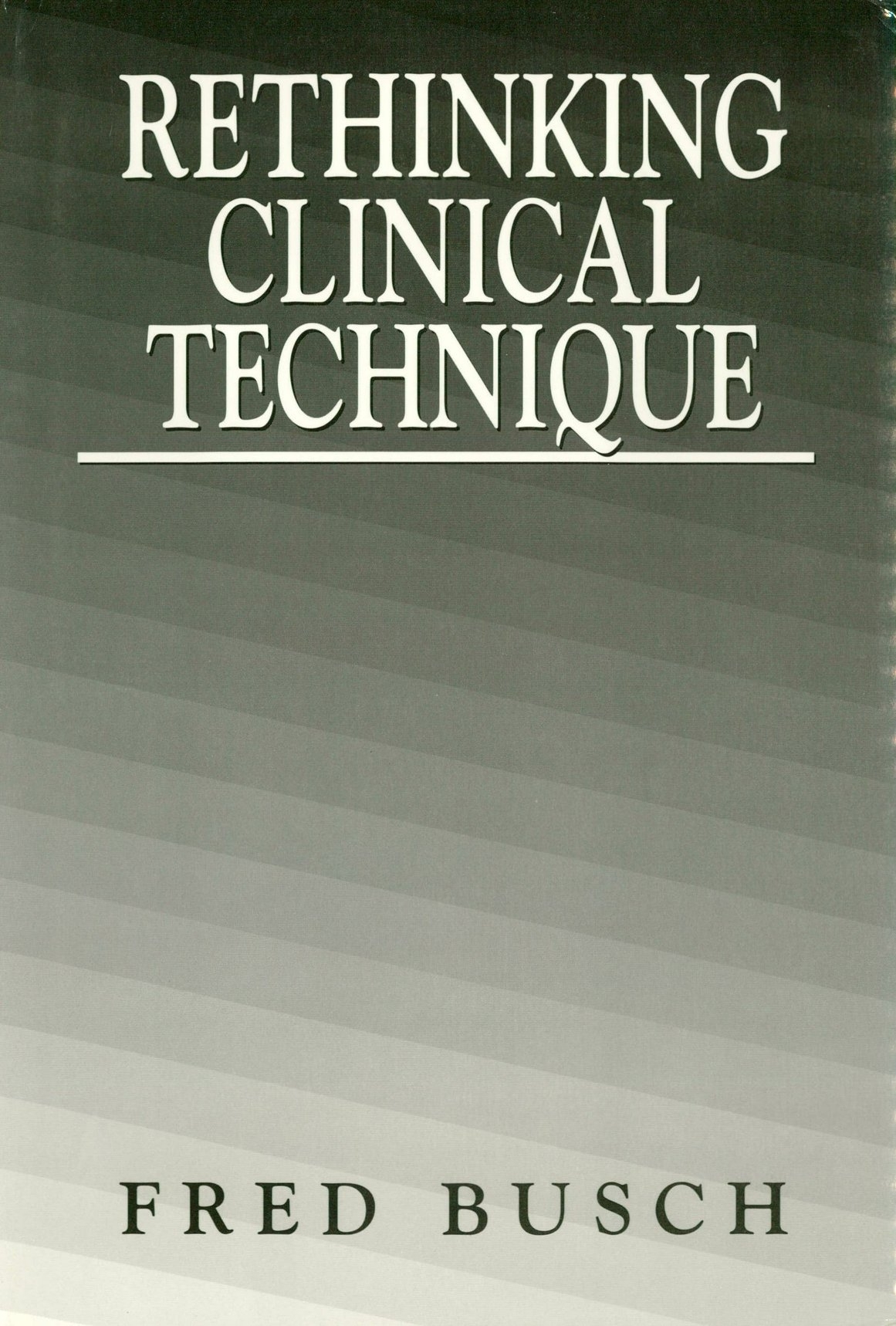
This book was set in 12 pt. Galliard.
Copyright 1999 by Jason Aronson Inc.
10 9 8 7 6 5 4 3 2 1
All rights reserved. No part of this book may be used or reproduced in any manner whatsoever without written permission from Jason Aronson Inc. except in the case of brief quotations in reviews for inclusion in a magazine, newspaper, or broadcast.
Library of Congress Cataloging-in-Publication Data
Busch, Fred, 1939
Rethinking clinical technique / Fred Busch.
p. cm.
Includes bibliographical references and index.
9781461710110
1. Psychodynamic psychotherapy. 2. Ego (Psychology) 3. Object relations (Psychoanalysis) 4. Psychoanalysis. I. Title.
RC489.P72B87 1999
616.8914dc21
98-30372
Printed in the United States of America on acid-free paper. For information and catalog write to Jason Aronson Inc., 230 Livingston Street, Northvale, New Jersey 07647-1726. Or visit our website: http://www.aronson.com
T wo theses inform this monograph. The first is that we have developed and nurtured certain myths in conceptualizing the psychoanalytic method, and these have come to dominate our thinking about clinical technique and the goals of analysis. The result has been a developmental lag (Gray 1982) in certain areas of technique, while other areas have hypertrophied. Techniques considered basic to psychoanalysis have never been fully explicated, and misunderstanding of the potential usefulness of these techniques flourishes. A prime example of this is resistance analysis (Busch 1992, 1995a, Gray 1982, 1994), which has been championed by some and skewered by others. From another perspective, insights into human behavior and technical considerations gleaned from those working within clinical models considered outside the purview of traditional psychoanalysis have been seen as offering a challenge to clinical technique, rather than as adding additional information to our fund of knowledge. The ongoing antipathy between what has become known as the classical analysts and the relational school, the self psychologists, interpersonalists, intersubjectivists, and object relationalists is an example of what Richards (1995) calls the policy of exclusion, which has dominated our political and clinical thinking. By identifying the myths that feed some of these conflicts of theory and technique, I hope to clear a path toward those areas where there may be common ground.
My second thesis is that we are in danger of losing some essential ingredient of what Levy calls Freuds radical treatment (personal communication, 1996). This ingredient, which I would characterize as greater psychological well-being via understanding ones own mind, is immeasurably bolstered using new insights into the theory and technique of clinical psychoanalysis from the realm of ego psychology. By understanding the central role of the ego in the change process in psychoanalysis, new methods of conceptualizing the clinical task of understanding and interpreting become available to us. These new methods, some of which are old methods rediscovered and put in previously unspecified clinical contexts, are designed to identify, analyze, or capitalize on those factors that work against and for structural changes in the ego. These changes are basic to what I would consider a psychoanalytic treatment, in contrast to a therapeutic one. An alteration in how the mind works is our fundamental connection to Freuds psychoanalysis, and it is in danger of being lost in the increasing emphasis on the ameliorative effects of the relationship.
Although I agree with many of the critiques brought against the way psychoanalysis has been practiced by those more attuned to the significance of the analytic relationship, it is the omission of a coherent theory of mind and how psychoanalysis can bring about significant changes in analysands views of their own thought processes that differentiates our perspectives. I hope to demonstrate that structural change in the ego is fundamental to the psychoanalytic process, and that we need to be aware of methods of working that aid or hinder this process. Let me begin with the myths.
Myth #1 is that American psychoanalysis has been dominated by ego psychology. Wallersteins (1988) view of ego psychology, universally accepted since the 50s, as holding a monolithic hegemony over the psychoanalytic domain in America, must be examined closely. I believe it has been one of our most enduring and complex myths, dominating the thinking of critics and defenders of so-called classical analysis.
It is my impression that is primarily in three areas that ego psychology has dominated thinking in American psychoanalysis over the last half century. The first of these is the area of the developing ego in its environmental surrounds, and the investigation of conditions leading to either a flourishing of or interference with ego functioning. Foreshadowed in the work of Anna Freud (1936) and Hartmann (1939), its first convincing demonstration was in Spitzs (1945, 1946) work on hospitalism, which showed the devastating effects of maternal deprivation, followed by Eriksons (1950) interpretation of the threatening or affirmative feelings associated with the nature of the resolution of the psychosexual stages. Mahlers (Mahler et al. 1975) work on the separation-individuation subphases is an example of how ego psychology was developed and utilized in the United States in a manner unlike that used anywhere else in the world. By pointing to the developmental sequence of certain anxieties, and the disruptive consequences for the child of the unavailability (emotional or physical) of needed objects, Mahler pointed clinicians to a greater understanding of one of the factors in the egos capacity to tolerate anxiety in the face of a threatened loss (either real or imagined). It has become another possible explanatory cause in the analysts understanding of threats to the ego, and finds immediate currency in the work of Pine (1985), who helps us understand how such problems might manifest themselves in the analytic situation, for example, in distinguishing between separation problems where there is differentiated other (p. 233) and those where there has been a failure of differentiation (p. 233). In short, the mapping of the effect of environmental and developmental factors on ego functioning has had extraordinary impact on our thinking about human development, and can be seen in the marked changes in our views about childhood and adolescence, and such diverse clinical concepts as action, narcissism, and trauma, just to name a few.
The second important contribution of American ego psychology appears in the 19381959 work of Rapaport (Rapaport 1967) and involved the increasingly sophisticated diagnosis of psychological states based on the intactness of the ego. It led to significant changes in how we understood pathology, and shifted diagnostic understanding from its primary emphasis on dynamics to diagnosis, which investigated the intactness of the patients ego in all its manifestations. It is demonstrated at its most succinct in Zetzels (1968) classic paper, The So-Called Good Hysteric, and at its most exhaustive in Kernbergs (1976) delineation of the syndrome of the borderline personality organization. It has led to sweeping changes in what type of patients we believe can be treated in psychoanalysis, and the development of special methods of interpretation in dealing with more disturbed patients.
The third major contribution of American ego psychology was Brenners (1982) conceptualization of mental content as a compromise formation, which crystallized the significance of contributions from the agencies of the mind on any mental act. This led us to understand, for example, that in the psychoanalytic setting any content can be used as a resistance, and that dreams are more than just the experience of a drive derivative. Thus the concept of compromise formation has allowed for the possibility of a more richly textured view of the ego. A patients increasingly hostile behavior toward the analyst can be seen not only as an expression of a sadistic impulse, but also as response of the unconscious ego to any one of myriad of threatening thoughts and feelings. Unconscious fantasies, seen primarily as an expression of a drive derivative, could also be looked at from the side of the resistances, while their effects on ego functions could also be explored (Arlow 1969). Paradoxically, Brenners views on compromise formation have led him to de-emphasize the significance of highlighting the ego in clinical technique with, as we shall see, important consequences.
Font size:
Interval:
Bookmark:
Similar books «Rethinking Clinical Technique»
Look at similar books to Rethinking Clinical Technique. We have selected literature similar in name and meaning in the hope of providing readers with more options to find new, interesting, not yet read works.
Discussion, reviews of the book Rethinking Clinical Technique and just readers' own opinions. Leave your comments, write what you think about the work, its meaning or the main characters. Specify what exactly you liked and what you didn't like, and why you think so.

